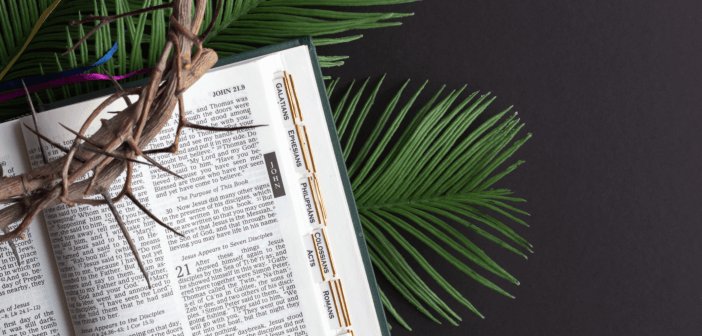Holy Week is more than Palm Sunday and Easter—it’s a transformative journey. As Holy Week approaches, Andreá Cummings invites us to expand our Holy Week practices as we journey to the cross with Jesus. Engaging fully in Holy Week through daily devotions, communal reflections and more can lead to a richer understanding that strengthens our faith and connection to Christ and one another.
Must Jesus bear the cross alone and all the world go free?
No, there’s a cross for everyone, and there’s a cross for me.
— Thomas Shepherd
If you’re like me, Holy Week often brings to mind only Palm Sunday, Maundy Thursday, and perhaps a Good Friday or Tenebrae service. However, Holy Week is a significant journey that encourages us to explore the events leading up to Jesus’ death and resurrection. If you only attend Palm Sunday to receive your palms and shout “Hosanna,” and then return on Easter Sunday, you miss out on a profound spiritual experience that unfolds throughout the entire week.
To truly commemorate and remember the events leading up to Jesus’s death this year, I invite clergy and laity to go deeper in their reflection and engagement with Holy Week.
Create a daily devotion for each day of Holy Week.
Last year, I invited clergy from various churches to lead a morning conference call devotional at 8 am. Each person was allotted 8-10 minutes for a daily devotional, which included a closing prayer. A midday devotion on your preferred social media platform or a podcast might work better for your context. Whatever you choose will invite your congregation to journey to the cross with Christ and one another. Consider the following scriptures for personal or congregational daily devotions.
- Holy Monday and Holy Tuesday are days for reflection on the teachings and miracles of Jesus. On Holy Monday, focus on the story of Jesus cursing the fig tree (Matthew 21:18-22; Mark 11:12-14) and cleansing the temple (Matthew 21:12-17; Mark 11:15-19; Luke 19:45-48).
- Holy Tuesday focuses on Jesus’ prediction of his death and the question of his authority posed by religious leaders (Matthew 21:23-24:51; Mark 11:27-13:37; Luke 20:1-21:36).
- Holy Wednesday is a day of somber reflection on the themes of betrayal and forgiveness (Matthew 26:14-16; Mark 14:10-11; Luke 22:3-6).
- Holy Thursday commemorates Jesus’ Last Supper with his disciples, where he instituted the sacrament of Holy Communion. It is also the day when Jesus washed the disciples’ feet, demonstrating servanthood and humility (1 Corinthians 11:23-26, John 13:1-17, 31b-3).
- Good Friday marks the crucifixion and death of Jesus, a solemn day of reflection (John 18:1-19:42).
Share the journey.
Holy Week is not meant to be observed in isolation. It is a communal experience that draws believers together as they walk the path of Christ’s passion, death, and resurrection. Coming together for shared reflection, prayer, and fellowship fosters a sense of unity and strengthens the spiritual bonds within a community.
One simple yet meaningful way to cultivate this togetherness is by organizing midday lunches or evening soup gatherings paired with Scripture reflection. These informal settings encourage open discussions, shared insights, and deepened relationships among participants. As believers reflect on Jesus’ journey to the cross, they also journey alongside one another, providing support, encouragement, and accountability in faith.
Attend an Easter Vigil.
“The Easter Vigil is a unique Holy experience. It led me to experience the pure holiness of the Resurrection and allowed me to see it in a more meaningful manner than before. I’ve felt different inside about the resurrection after each vigil.” — Omega Taylor
Another addition to your Holy Week offerings that is not as common across denominations is the Easter Vigil on Holy Saturday. What is the Easter Vigil?
“During the Great Three Days, from sunset Holy Thursday to sunset Easter Day, we celebrate the saving events of Jesus Christ’s suffering, death, and resurrection. In the development of Christian worship, each event came to be remembered on a separate day. In the earliest centuries, however, these events were celebrated as a unity in an extraordinary single liturgy that began Saturday night and continued until the dawn of Easter Day. It was known as the great Paschal (Easter) Vigil. Preceded by a fast day, it was the most holy and joyful night of the entire Christian year, for it proclaimed and celebrated the whole of salvation history and Christ’s saving work. It is the most appropriate time for baptisms; persons baptized symbolically die and rise with Christ (Romans 6:3 –11). It has also come to be seen as a most appropriate time for congregational reaffirmation of the Baptismal Covenant. The Easter (Paschal) Vigil has both historic and symbolic roots in the Jewish Passover. That is why so many images are from the Old Testament and why so many analogies are experienced in Christ. In this service we experience the passage from slavery to freedom, from sin to salvation, from death to life.” (United Methodist Church. The United Methodist Book of Worship. Nashville: United Methodist Publishing House, 1992).
If you’re part of a cluster relationship or cooperative parish with surrounding churches, consider partnering with another local church to host an Easter Vigil or attend an Easter Vigil at a nearby church. If you add the Easter Vigil as part of your Holy Week offerings, you will most likely find it spiritually nourishing and walk away with a deeper connection to the meaning of the power of the resurrection.
“I enjoy the Easter Vigil. It helps me make the actual resurrection feel more significant.” — Bill Wooden
As we approach Holy Week, prepare to embark on a transformative journey alongside Christ by exploring the depths of His love and sacrifice. Whether through morning devotions, midday reflections, or communal gatherings, let us come together as a community to reflect, pray, and grow in our spiritual journey. Embrace the chance to discover the richness of this sacred time, allowing the lessons of humility, compassion, and forgiveness to resonate in our lives. Must Jesus bear the cross alone?
Related Resources
- Easter Vigil Brings the Story of Salvation to a City in Need by Kate Payton
- Resurrection as a Call to Action by Ann A. Michel
- How a Creative, Justice-Oriented Stations of the Cross Called a Community to Action by Jessica L. Anschutz






